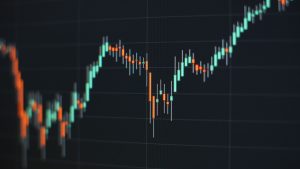The cryptocurrency market has captivated traders around the world, attracting both short-term and long-term investors with its volatility and growth potential. Two of the most popular trading approaches in crypto are day trading and swing trading. While both strategies aim to capitalize on price movements, they differ in time commitment, risk tolerance, and skill requirements. In this guide, we’ll compare day trading and swing trading to help you decide which strategy might best suit your goals.
For deeper insights into professional trading strategies and market analysis, consider joining our EPIQ Trading Floor community for a 3-day free trial. Access exclusive tools, signals, and insights from experienced traders today!
What Is Day Trading?
Day trading involves buying and selling assets within the same trading day, with the goal of capitalizing on short-term price fluctuations. In the crypto market, this means trading based on hourly or even minute-by-minute changes.
Pros of Day Trading
- Quick Profits: Day traders aim to make quick profits by capitalizing on small price movements, often using leverage to amplify gains.
- High Volume of Trades: Because of frequent trading, day traders have multiple opportunities to profit each day.
- Avoid Overnight Risk: Since positions are closed daily, day traders avoid the risks of market changes that can happen overnight.
Cons of Day Trading
- Time-Intensive: Day trading requires full attention and quick decision-making, as price changes can happen in seconds.
- High Risk: The crypto market’s volatility can lead to substantial losses just as quickly as it can bring gains, especially when using leverage.
- Requires Technical Skill: Successful day trading involves thorough knowledge of technical analysis and the ability to execute trades quickly.
What Is Swing Trading?
Swing trading involves holding positions for several days or weeks to capture “swings” in the market. Instead of focusing on minute-by-minute changes, swing traders look for broader trends and patterns.
Pros of Swing Trading
- Less Time-Intensive: Swing trading allows traders to monitor the market without having to watch every tick, making it easier to balance with other commitments.
- Potential for Higher Profits per Trade: Swing traders can benefit from larger market moves, potentially earning more on each successful trade.
- Fewer Trades, Lower Fees: Swing trading requires fewer trades compared to day trading, which can save on transaction fees and reduce the impact of short-term price noise.
Cons of Swing Trading
- Overnight and Weekend Risk: Swing traders are exposed to the risk of adverse market moves during weekends or overnight sessions.
- Patience Required: Swing trading requires waiting for the right entry and exit points, which can test a trader’s patience and discipline.
- Market Timing Is Crucial: Identifying the start and end of trends can be challenging, and misjudging timing can lead to losses.
Key Differences Between Day Trading and Swing Trading
Understanding the differences between day trading and swing trading can help determine which method aligns with your trading personality and financial goals.
1. Time Commitment
- Day Trading: Demands full-time attention and continuous monitoring of charts.
- Swing Trading: Requires monitoring markets periodically, which can be done alongside a day job.
2. Risk and Reward
- Day Trading: High-risk, high-reward approach that relies on short-term price volatility.
- Swing Trading: Lower daily risk with the potential for significant profits on well-timed entries.
3. Trading Style
- Day Trading: Best for those who thrive in fast-paced environments and have experience with technical analysis.
- Swing Trading: Ideal for those with patience and an understanding of broader market trends.
Which Crypto Strategy Is Best for You?
The best strategy depends on your individual preferences, risk tolerance, and lifestyle.
- Day Trading may suit traders who enjoy fast-paced environments, are comfortable with high risk, and have the time to dedicate to active trading.
- Swing Trading might be better for those who want more flexibility, prefer holding positions longer, and are comfortable with less frequent, but potentially larger, gains.
If you’re new to trading or want more guidance, consider joining EPIQ Trading Floor to access exclusive trading insights, tools, and signals that support both day and swing trading styles.
Getting Started: Tips for Both Day and Swing Traders
Whether you choose day trading or swing trading, consider these tips to help you on your journey.
For Day Traders:
- Have a Plan: Plan your entry and exit points in advance.
- Use Technical Indicators: Indicators like the MACD, RSI, and moving averages can help make fast trading decisions.
- Practice Risk Management: Limit your exposure to any one trade by setting stop-loss orders.
For Swing Traders:
- Follow Macro Trends: Look for larger trends using weekly or daily charts.
- Be Patient: Wait for the right entry and exit points, even if it takes days or weeks.
- Monitor Key Support and Resistance Levels: Understanding support and resistance zones can help in identifying ideal entry and exit points.
Final Thoughts
Both day trading and swing trading have the potential for profitability, but each has unique demands and challenges. Choose the approach that best aligns with your trading goals, risk tolerance, and available time. Remember, trading requires a solid plan, discipline, and a reliable support system.
If you’re ready to take your trading to the next level, join EPIQ Trading Floor with a free 3-day trial for access to professional tools, trading signals, and a supportive community.
Disclaimer
This post is for informational purposes only and does not constitute financial advice. Always conduct your own research and consult a financial professional before making trading decisions.










Responses